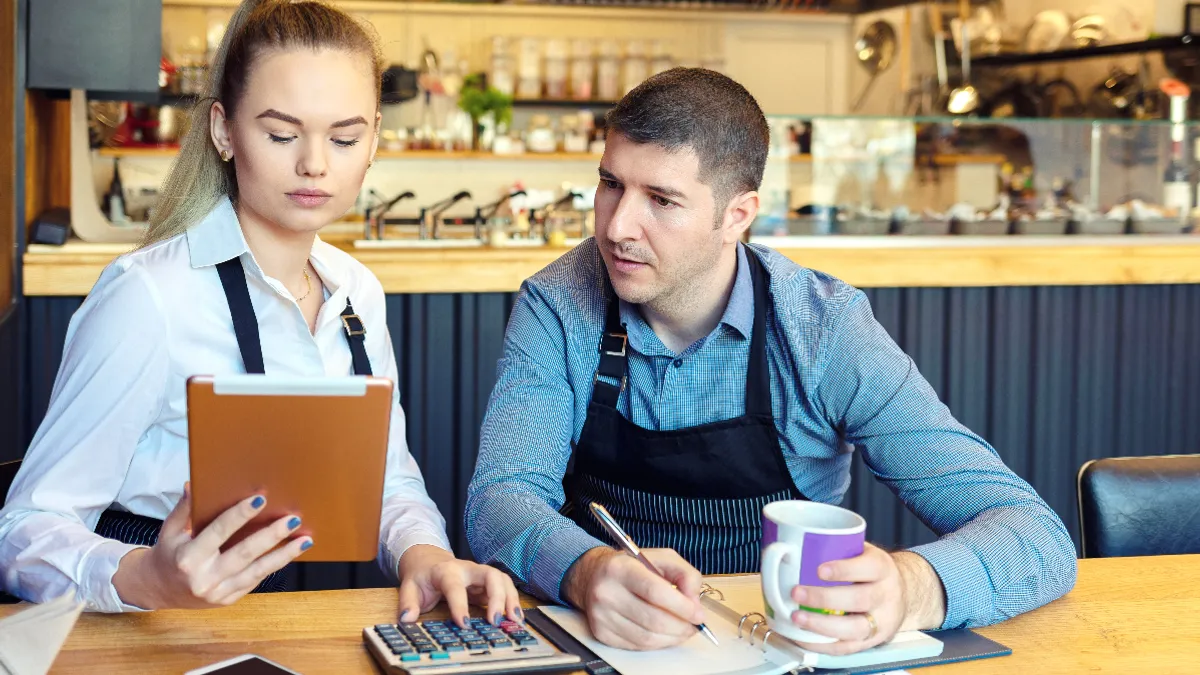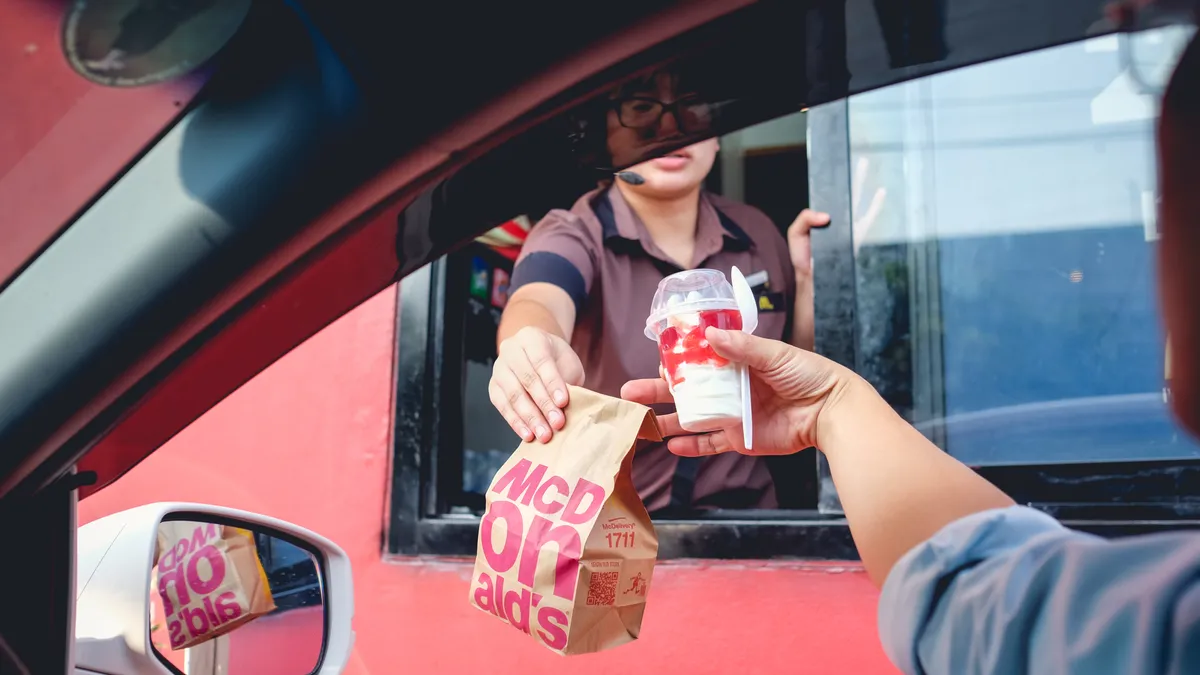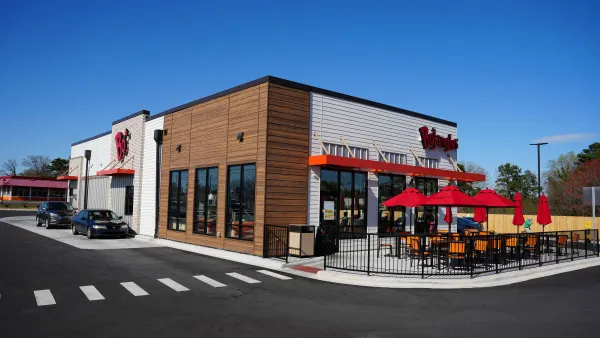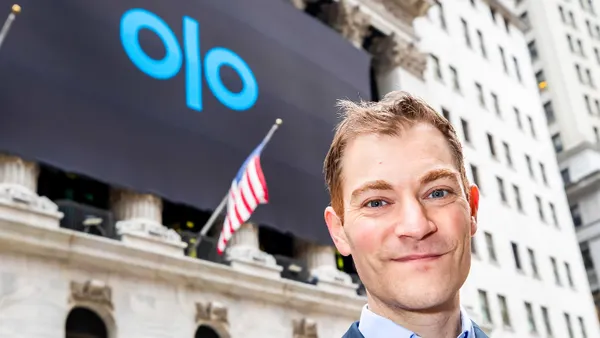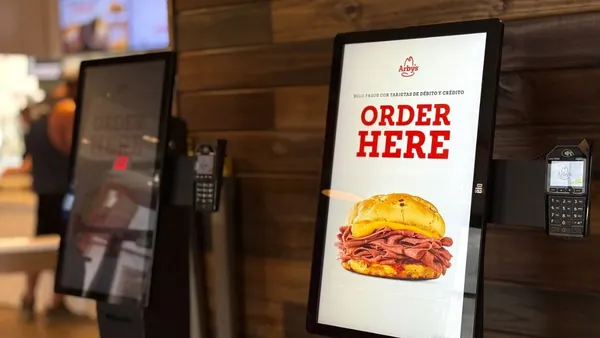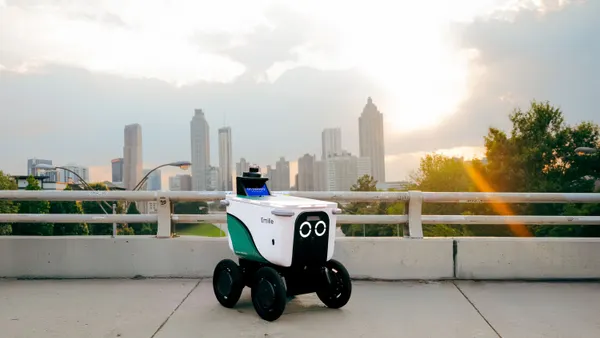Dive Brief:
- A U.K. sushi restaurant sold more than 140 meals in November that would otherwise go to waste through a rescue app called Too Good To Go, according to the Norwich Evening News. The restaurant says the number of rescue sales increases every month.
- The free app lets users scan nearby restaurants for categories of food rather than specific dishes, all available at steep discounts of $2.60 to $5.30, reported Business Insider in 2016. Restaurants have full control over their listings and can schedule pick-up times for customers to retrieve their orders — at the end of lunch or dinner shifts, for instance.
- Too Good To Go has been downloaded more than 3 million times since its 2016 launch and is now available in seven languages and countries, including Denmark, Germany and the Netherlands. As of late last year, it has diverted 2.6 million meals from a landfill, the company told Rabobank.
Dive Insight:
Too Good To Go has been downloaded at least 1 million times on Google's Play store, where nearly 35,000 user reviews average 4.6 stars. Customers seem to most appreciate the concept itself of saving food that would typically end up in the trash, but many complain about the app's search capabilities and its limited areas.
Other startups have tried their hands at food waste solutions with varying degrees of success. Right now the apps seem to be targeted toward separate segments of the food industry rather than just restaurants, where 41% of food waste originates in the U.K., Too Good To Go's homebase. Estimates peg uneaten food worldwide at around one-third of supply, piling up to a staggering $1.6 billion. Though most of the waste happens at the producer level, processors, distributors and consumers balloon the problem, tossing fruits and vegetables at higher rates than other foods, according to National Geographic.
U.S. restaurants know the problem exists, but busy schedules keep it low on the priority list, and inconsistent laws complicate donation opportunities. Whether to satisfy the diner, the chef or the brand, restaurants put forth their best and not their near-expiration. Selling food, on the other hand, might solve the pesky issue of why ugly fruit and vegetables (or sushi that's servable only on the day it's prepped) don’t make it to plates in the first place.
Consumers want restaurants to try harder, even if they don't try that hard themselves — the EPA estimates that up to 50% of food waste starts at home. New York-based goMkt, which helps retailers sell excess of day-old food at a discount, found that nearly half of consumers would pay more to dine at restaurants with food recovery programs. Similarly, more than half will pay more at restaurants that use sustainable packaging.
Like goMkt, Too Good To Go aims to diminish food waste through a system that takes advantage of consumers' increasingly common online ordering habits, but the app carries two potentially glaring flaws. First, customers roll a magic-8 ball in what precisely they'll receive, selecting only "pastries" or "sandwiches," for instance. Second, they must pick it up themselves. Partnering with a delivery app with existing broad reach could take the idea to a more promising level.
Perhaps the largest food-rescue app, OLIO lets consumers and businesses, including Pret A Manger and the U.K.’s second-largest grocery chain Sainsbury's, share surplus food. It now boasts more than 325,000 food-sharers in 41 countries worldwide, saving more than 400,000 meals. The Netherlands' NoFoodWasted offers a similar discount scheme for supermarket produce, bread and meat that will soon be unsellable. Winnow heads straight to the kitchen, helping staff measure what they throw in the trash to improve ordering and menus in the future.



